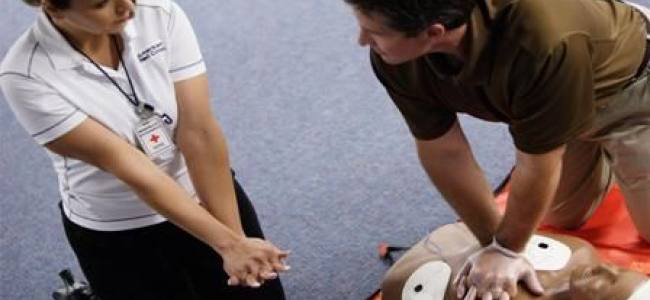
The facts about cardiac arrest and resuscitation (CPR)
Second part
Cardiac arrest survival, male v. female
There are mixed results from data compiled from two European studies.
In a French study that reviewed data on almost 500,000 patients, researchers found that more women did not receive CPR from bystanders.
More women did not have a “shockable” rhythm [a “shockable” rhythm is one that may convert to a more normal, perfusing rhythm after a shock (defibrillation.) Some rhythms do not respond to shocks.]
Many women were older than their male counterparts and may have other associated illnesses.
Yet, in spite of these factors, more women who survived the resuscitation were discharged alive from the hospital than were men in similar circumstances. The reason for this is unknown.
But a Dutch study presents some different data.
Researchers identified 22,443 out-of-hospital cardiac deaths (52.8 percent male) and reviewed data on 6,038 out-of-hospital CPR attempts by emergency medical services (72.5 percent male) in the same study region, all aged over 20. They found:
Women have a significantly lower chance of receiving a resuscitation attempt from emergency medical personnel than men (15 percent women vs. 35 percent men).
Women had a significantly lower chance of successful survival after a resuscitation attempt than men (13 percent women vs. 20 percent men).
Women had a lower proportion of “shockable” initial heart rhythm (34 percent women vs. 49 percent men), a strong determinant of survival.
Social factors (such as older women living alone) as well as biological factors (such as women presenting with different symptoms or more heart failure as cause of the sudden cardiac arrest) may be reasons why women have less chance of receiving CPR, researchers said.
Much of the data supports information from the French study – few women have “shockable” rhythms, not as many women as men receive CPR, etc. But the Dutch study didn’t look at the number of women surviving and leaving the hospital love after treatment.
Many of the reasons for the poorer response in women may be due to social circumstances (older, living alone) or medical ones (many older people have more advanced cardiovascular disease, may have other illnesses contributing to the outcome, etc.) Thus, the lower survival rate may not be due to a gender difference. What is surprising is that, in both studies, there were fewer attempts to resuscitate women by both bystanders and by EMS personnel. That isn’t addressed by either data abstract.
The take home message
The take home message is that, in most cases:
Cardiac arrest is not a rare event and can often occur in public places or in the home.
Cardiac arrest can occur in otherwise healthy-appearing people.
More people survive cardiac arrest when bystanders act quickly to start CPR.
Bystanders should be trained (and retrained periodically) in CPR and encouraged to initiate resuscitation.
A quick word about “Hands-Only CPR.” John had mentioned to me that when he was in high school, they taught CPR with compressions and breaths. Hands-Only CPR only requires compressions. The American Heart Association has developed this technique for use in witnessed cardiac arrests, meaning you see the person collapse. Formerly, a rescuer gave two breaths and then started chest compressions after first calling 911. It’s been found that usually, in the first few minutes after a cardiac arrest, the victim has enough oxygen in his lungs and blood to supply the tissues without having someone breathe for him.
So, if an adult or teen is seen to collapse, hands-only CPR is appropriate.
But, for infants, children, someone with known breathing problems, drowning victims or an unwitnessd arrest, standard CPR (calling 911, giving breaths alternating with compressions) is preferred.
Rather than get bogged down in the details, use this as your general rule: Hands-only CPR is for a witnessed arrest in an adult or teen. Others will probably need CPR.


